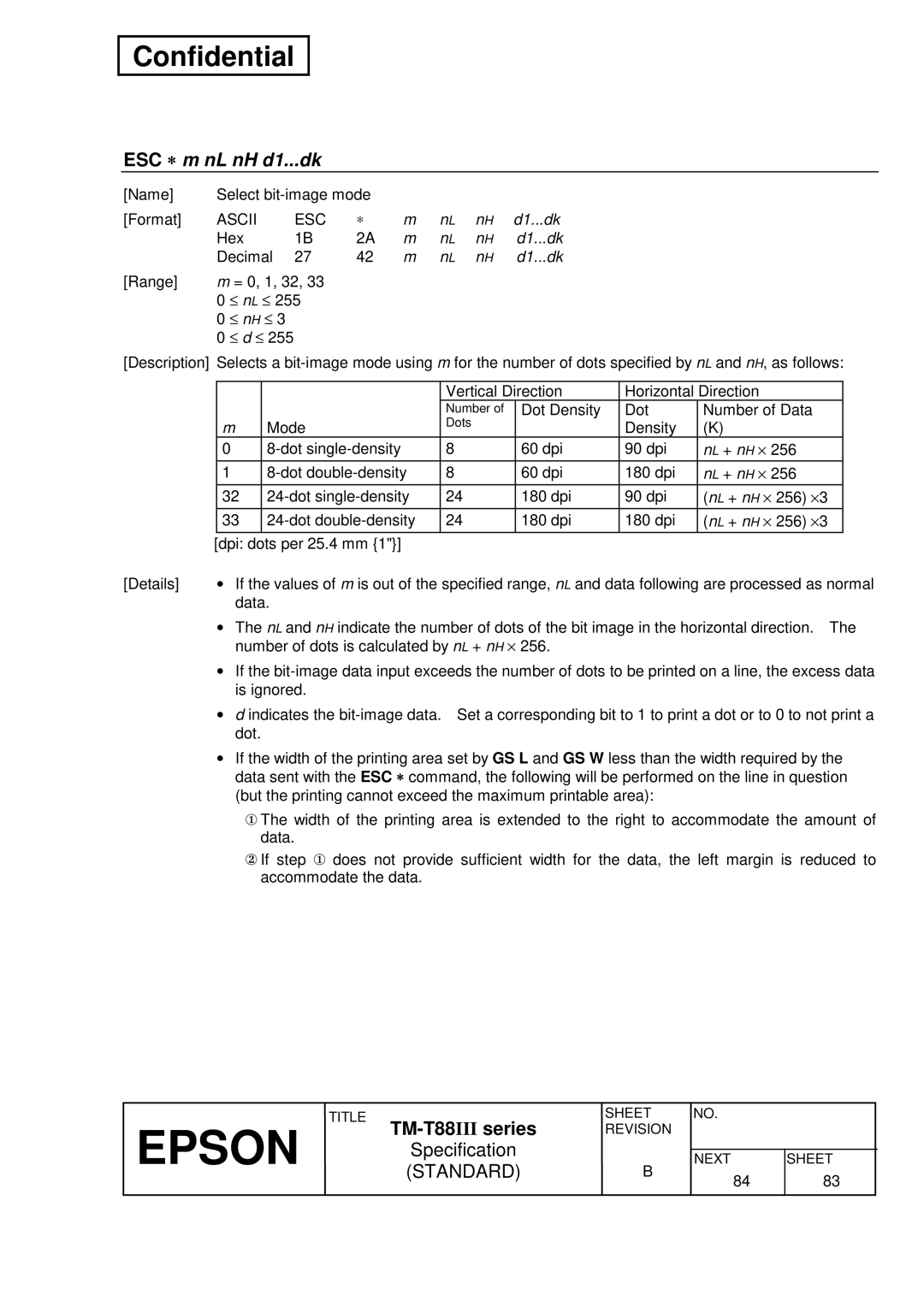
Confidential
ESC ∗ | m nL nH d1...dk |
|
|
|
|
| ||
[Name] | Select |
|
|
|
| |||
[Format] | ASCII | ESC | ∗ | m | nL | nH | d1...dk | |
| Hex | 1B | 2A | m | nL | nH | d1...dk | |
| Decimal | 27 | 42 | m | nL | nH | d1...dk | |
[Range] | m = 0, 1, 32, 33 |
|
|
|
|
| ||
| 0 ≤ | nL ≤ | 255 |
|
|
|
|
|
| 0 ≤ | nH ≤ | 3 |
|
|
|
|
|
| 0 ≤ | d ≤ 255 |
|
|
|
|
| |
[Description] Selects a
|
|
|
| Vertical Direction | Horizontal Direction |
|
| ||
|
|
|
| Number of | Dot Density | Dot | Number of Data |
| |
|
| m | Mode | Dots |
| Density | (K) |
|
|
|
| 0 | 8 | 60 dpi | 90 dpi | nL + nH ⋅ | 256 |
| |
|
| 1 | 8 | 60 dpi | 180 dpi | nL + nH ⋅ | 256 |
| |
|
| 32 | 24 | 180 dpi | 90 dpi | (nL + nH ⋅ | 256) ⋅ 3 |
| |
|
| 33 | 24 | 180 dpi | 180 dpi | (nL + nH ⋅ | 256) ⋅ 3 |
| |
|
| [dpi: dots per 25.4 mm {1"}] |
|
|
|
|
|
| |
[Details] |
| • If the values of m is out of the specified range, nL and data following are processed as normal | |||||||
|
| data. |
|
|
|
|
|
| |
•The nL and nH indicate the number of dots of the bit image in the horizontal direction. The number of dots is calculated by nL + nH ⋅ 256.
•If the
•d indicates the
•If the width of the printing area set by GS L and GS W less than the width required by the data sent with the ESC ∗ command, the following will be performed on the line in question (but the printing cannot exceed the maximum printable area):
①The width of the printing area is extended to the right to accommodate the amount of data.
②If step ① does not provide sufficient width for the data, the left margin is reduced to accommodate the data.
EPSON | TITLE |
| SHEET | NO. |
|
| REVISION |
|
| ||
| Specification |
|
|
| |
|
| NEXT | SHEET | ||
| (STANDARD) | B | |||
|
|
|
| 84 | 83 |
